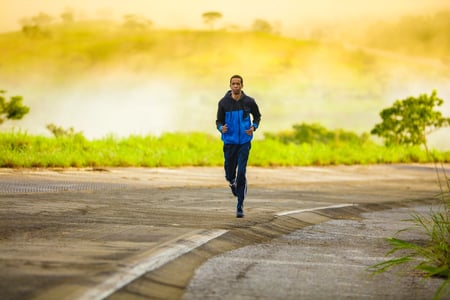
Image Credit: PTPioneer
Effective coaches support different teachers in different ways. One way coaches individualize their support is by differing their coaching based on teachers’ readiness to change. Research suggests that it is a combination of a teacher’s subject knowledge and receptivity to feedback that contribute to this ‘readiness.’ So how do we know where our teachers are on this readiness continuum and how do we react to that knowledge?
I consider myself pretty athletic. I love to run. I have the shoes, I know the route I take through my neighborhood and feel confident in my ability to run those 2 miles. I wake up in the morning and I’m ready! Now, about this Thanksgiving 10k Turkey Trot my sister wants me to run with her … I’m on the fence. Yes, I have the shoes and know how to run. However, I am a little uneasy about the route. Are there hills? (My neighborhood is flat so I’m not as confident in my ability to run those.) I think I can do it, but I need a little time. I want to see the route. I want to try and run some similar routes and make sure I feel confident. I want to know what it feels like to run for that long and up those hills without stopping.
My other sister is a total athlete. She can run circles around me. She scales mountain walls and is now wanting me to try climbing with her. I am not ready! First of all, there is a lot of equipment that I need and don’t own (i.e. those crazy spikey shoes) and even if I could borrow the shoes, is rock climbing good for me? Will the pressure I put on my knees be worth the physical exercise I get from the climb? I just don’t know enough and I am not confident in my ability to try it … yet. I promise to keep you posted on this one.
Readiness is not stagnant but rather a continuum. People may be at any point along this continuum at any time—and even multiple points depending on the specifics (i.e. so ready to go for my morning run, thinking about the 10k, and not ready to climb that mountain wall).
Where a teacher is along this continuum should help you to determine the type of support you can provide that will best impact a desired outcome. The two common factors that influence teachers’ readiness to change is their knowledge and self-efficacy. Can I do it and do I know how?
If you want more info on identifying readiness levels -- check out our myTeachstone resources HERE and HERE.
Once we have figured out where someone is on this continuum, how do we support them in the most impactful way? Research supports us using the KNOW/SEE/DO approach:
Not ready—Know (learning). Support a teacher in seeing the difference between her current behavior and what more effective behavior looks like. For example, articulate what effective Concept Development looks like. Explain what it means to collaboratively plan and produce something in your classroom with children.
On the fence—See (building awareness). Support teachers in becoming more aware of the difference between current behavior and more effective behavior—and reduce any barriers to change they might be facing. Watch videos of teachers exemplifying effective practice and support them in identifying those interactions and the impact they have on children.
Ready to change—Do (demonstrating). Support teachers in taking action to change their current behavior to a more desired behavior.
So how am I going to get off the fence and get ready for this race two Thursdays from now? Let’s SEE…
- I am going to check out the route--see how many hills there are, see the twists and turns.
- I am going to talk to sister--she’s run the race before and may have some feedback.
- I am going to try to run some hills to improve my confidence.
In the same way I look at tackling new skills for myself, we can think about supporting educators’ desire and knowledge to improve interactions in their classrooms. For support to be most effective, it should be individualized. Successful differentiation of support includes both diagnosing the readiness to change and reacting to that diagnosis using the research based KNOW/SEE/DO approach. Help teachers to understand and recognize quality interactions and the impact they have on children’s social and academic development so that they are ready to try out new strategies and improve their own interactions.
Get them ready for the race and eventually that mountain.

